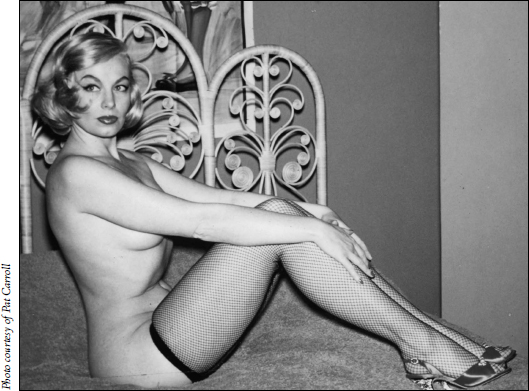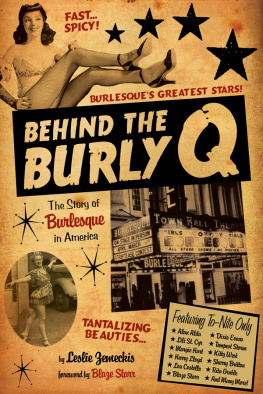
Mistress, Inc.
Photos all courtesy of the authors collection unless otherwise noted.
Copyright 2013 by Leslie Zemeckis
All rights reserved. No part of this book may be reproduced in any manner without the express written consent of the publisher, except in the case of brief excerpts in critical reviews or articles. All inquiries should be addressed to Skyhorse Publishing, 307 West 36th Street, 11th Floor, New York, NY 10018.
Skyhorse Publishing books may be purchased in bulk at special discounts for sales promotion, corporate gifts, fund-raising, or educational purposes. Special editions can also be created to specifications. For details, contact the Special Sales Department, Skyhorse Publishing, 307 West 36th Street, 11th Floor, New York, NY 10018 or .
Skyhorse and Skyhorse Publishing are registered trademarks of Skyhorse Publishing, Inc., a Delaware corporation.
Visit our website at www.skyhorsepublishing.com.
10 9 8 7 6 5 4 3 2 1
Library of Congress Cataloging-in-Publication Data is available on file.
ISBN: 978-1-62914-496-2
Printed in the United States of America
For the beautiful men and women of burlesque who shared their lives with me. I am a better, richer person for it. You have changed my life. This book is dedicated to you.

A rare photo of Lili St. Cyr
TABLE OF CONTENTS
Foreword
I started in burlesque in the 1940s. For more than thirty years I lived and breathed it. I wrote my biography years ago, but Leslie Zemeckiss Behind the Burly Q is the only flat-out absolute history of burlesque that is told by the performers themselves: from the straight men and comics, singers, musicians, and, of course, us strippers. I was never ashamed to say I took my clothes off, but not all the girls felt that way. Leslie persuaded many who had been embarrassed and ashamed to talk about their life in burlesque. Behind the Burly Q finally sets the record straight.
First in the film and now in print, Behind the Burly Q captures life in the theatres and clubs and offers an over-the-footlights perspective of not only what a burlesque show was, but also what life was like backstage. The book is filled with funny, sad, and downright tragic stories. With a passion and fearlessness to dig deep, Leslie uncovers the truth. It seems that until Leslie came along, no one cared to ask many of us what it had been like. No one ever asked us what we thought about burlesque. Behind the Burly Q is about our accomplishments, our love lives, and our heartaches. It is truthful, accurate, and fascinating.
From the moment we exchanged photos and I sold Leslie a couple of my handmade dresses, she has been a friend. It is obvious from the intimate details she writes that she has become a friend to many past performers who trusted her with the stories of their lives. Yet she never lets that friendship interfere with the truth. She has done her homework and brings insight and an encyclopedic knowledge to her storytelling. I was proud to share my story with Leslie.
Once I started talking to her, I couldnt stop. I told her about traveling on the road for years and performing in clubs across the country. I loved it and wouldnt trade my experiences for anything. Behind the Burly Q brought back those memories for me and the dozens of others whom she interviewed; those recollections are presented in this book with compassion and an eye for detail.
How was I viewed as a stripper? Some thought I was no good. But I knew better. Many of us were just using the assets God gave us. And I dont mean just bodybrains and creativity, too. And the audiences loved us. I always used humor in my act. What else would you call making my boob look like it was blowing out a candle? Burlesque had its place. Like I said in my book, The men need strippers.... They need to fantasize. I had them packed into my club, the Two OClock Club in Baltimore.
Leslie has a true understanding of the subject and has painstakingly researched burlesque, from its beginnings through its Golden Age in the 30s to its demise. I stopped in the 70s because it got too rough. Leslie sets right many misconceptions about burlesque and all the performers. We were not hookers or second-rate artists. I had a well-thought-out act in which my couch burst into flames. Where but in a burlesque show could I do something like that? A burlesque show was all that and more, not just a simple strip tease.
Burlesque provided an opportunity to many girls, like me, to escape poverty. I come from the rural hills of West Virginia. My daddy had black lung. We were lucky to get a new pair of shoes once a year. But burlesque got me out of the hills and I saw things most girls will never see. I met presidents and governors. I made a lot of money and I loved it. I made real good friends with the other performers, like Val Valentine. Shes been my friend for decades. Leslie captures all the friendships and intrigues, the petty jealousies (yes, there were fights), and also the love we had for what we did and each other. There was plenty of romance and danger, too, and Leslie tells it like it was. Relationships were nearly impossible to keep when we were working most weeks of the year.
I have never seen this world so lovingly and authentically recreated as Leslie has made it in Behind the Burly Q . For someone born long after burlesque died, Leslie has brought together history and personal storytelling that covers all aspects of burlesque. This isnt my story alone; it belongs to many performers with very different stories. As one critic said of Leslies film, it is a veritable whos who of the grande dames of the burlesque stage. And what dames we were.
In Behind the Burly Q, Leslie has meticulously and interestingly separated facts from rumor and myth. By choosing to tell our stories, in our own words, Leslie has captured a lost American art that I was proud to be a part of.
Blaze Starr
West Virginia, 2013
Note from the Author
The idea for my documentary Behind the Burly Q came in 2006, as these things are wont to do, by sheer happenstance. For several years I had been performing a one-woman burlesque-inspired show. My research began with curiosity: Just what exactly was a burlesque show? Was it just women getting up and taking off their clothes?
This first question led me to several former strippers, eager to relate their varied experiences taking it off in theatres and clubs across America during the 1930s through 1960s. Not only did they relate what it was like on stage, but they also shared what their lives were like backstagethe gossip, the camaraderie, the temptations, and the hardships.
I became fascinated by these tales of traveling the wheel (performers traveled from town to town, playing a set of theatres in rotation, thus the term wheel). I dove into books, magazines, and newspaper archives, and I watched numerous documentaries. Some of the films focused on the more famous strippers acts, but revealed nothing about how they got into the business and what happened to them when burlesque died. Some documentaries highlighted the rise of many comedians we honor todayPhil Silvers, Red Skelton, Jackie Gleasonbut I could find nothing that broke the faade of baggy pants and tassel twirlers.














